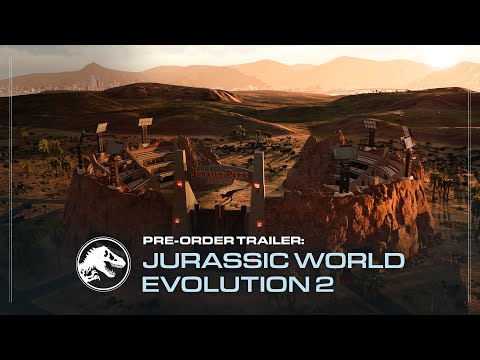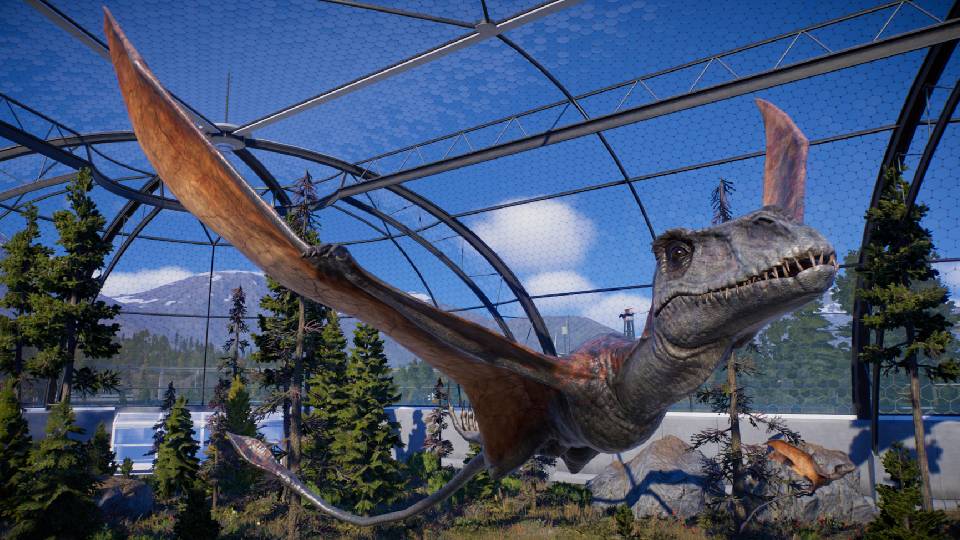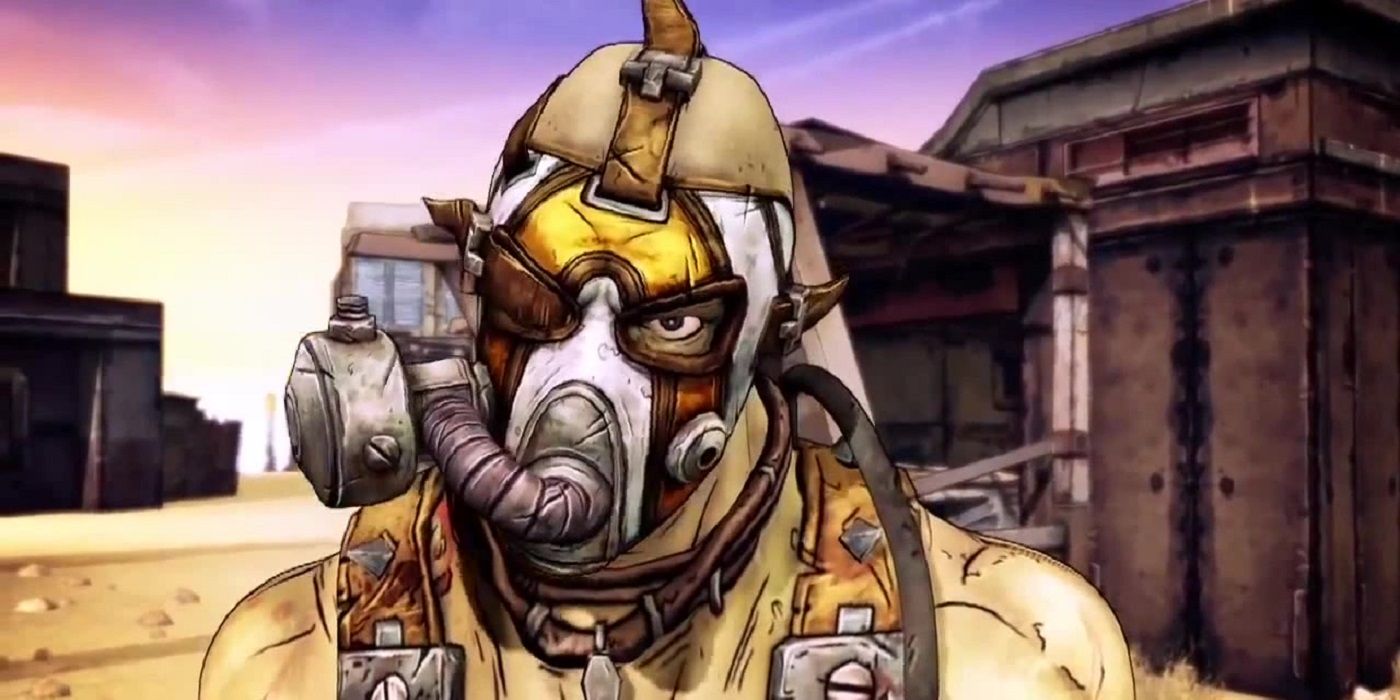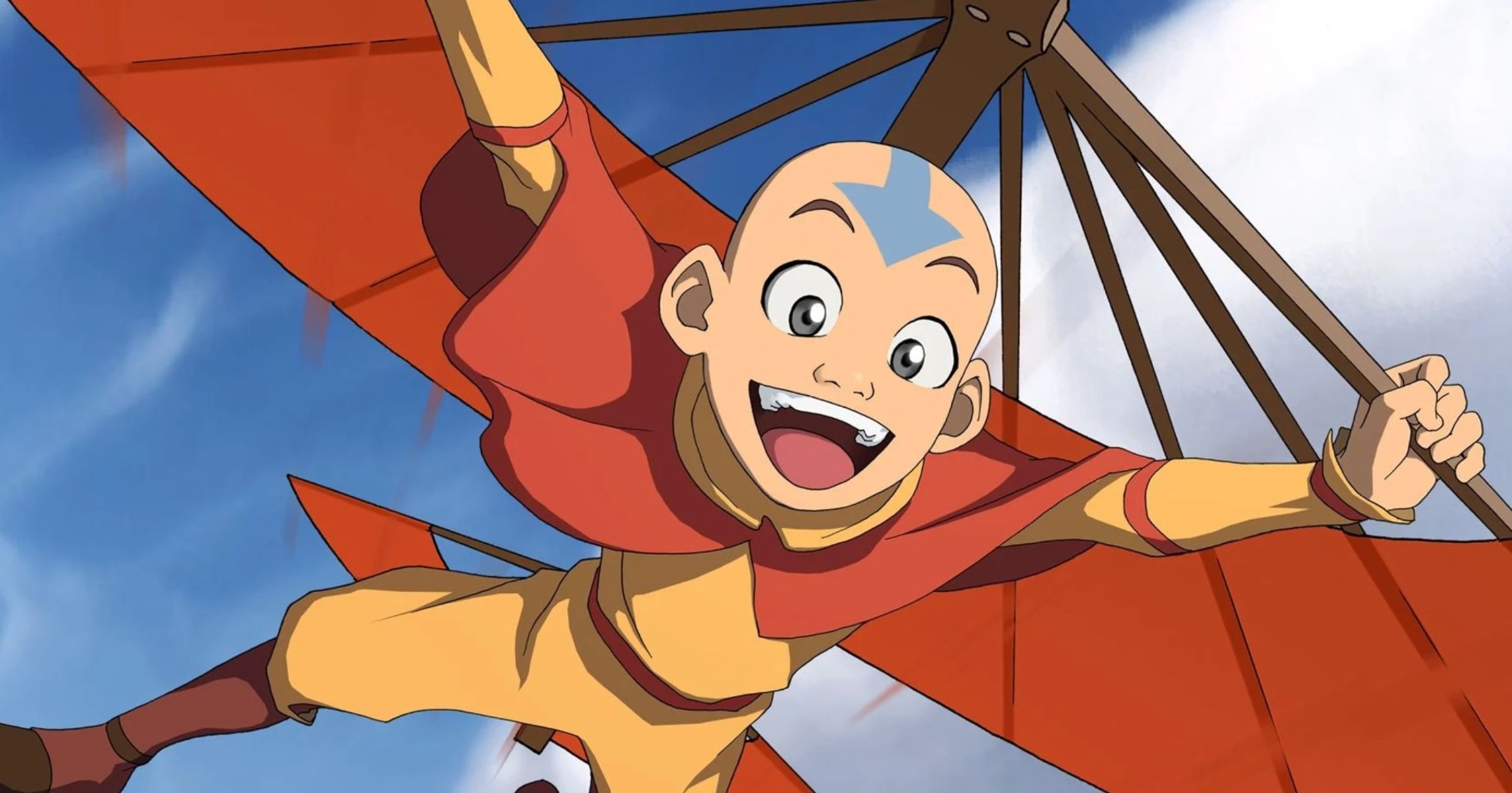
With the impending launch of the excellent Jurassic World Evolution 2 – just see our review! – we caught up with Frontier Developments to ask just how scientifically accurate their hotly-anticipated dino-wrangling sim really is.
Back in 1993, at the tender age of 11, I went to watch Jurassic Park at the cinema. It was both a wonderful and utterly terrifying experience. Like most children, I revelled in imagining how what these vast creatures would have looked like in real-life. Jurassic Park felt like my imagined worlds had become reality. For weeks after my cinema trip, a visit to the lavatory was never quite the same again.
Of course, since 1993 we’ve been spoiled by numerous Jurassic Park and Jurassic World films. After the film franchise’s highs and lows, we’ve become used to seeing photorealistic dinosaurs on the big screen. While still enjoyable, these films have become ordinary. Mundane, even.
Jurassic World Evolution proved such a wake-up call. No longer was I passively observing dinosaurs, I was directly interacting with them. Building my own park, watching a T-Rex and stegosaurs battle, desperately trying to keep a leash on the unfolding dinosaur-fuelled chaos, the game was a revelation. JWE revealed that my love for dinosaurs hadn’t gone away, it just needed reigniting.
Anyway, after that lengthy introduction, you can hopefully appreciate how excited I am to finally play Jurassic World Evolution 2. Also, I couldn’t help but ponder on whether Frontier Developments were intending to include the numerous new paleontological discoveries that have been made over the last few years into the game.
For example, in 2020 alone, we learned that the spinosaurus was a semi-aquatic creature thanks to its paddle-shaped tail, that dinosaurs suffered from cancer, and that some dino eggs were soft. Would any of these and other recent discoveries effect the game design of Jurassic World Evolution 2? We sat down with game director, Rich Newbold, to find out.
So, Rich, just how important was achieving paleontological accuracy in the depiction and design of the dinosaurs in Jurassic World Evolution 2?
The dinosaurs and reptiles are the stars of the show, so it’s vitally important to us that they look and feel like living, breathing beings. When designing a dinosaur for the game, we undertake extensive research into the real world science of how dinosaurs looked, behaved and existed millions of years ago, while ensuring that, ultimately, our depictions are inspired by the Jurassic films.
That’s all very well and good, I mused, but how was this research conducted? “It’s a question of looking at relevant paleontological materials,” Rich replied. “This includes research papers which may, for example, include descriptions of newly discovered fossilised skin preservation which could update our understanding of the possible visual appearance of a dinosaur. An example of this was edmontosaurus; a preserved soft tissue head “comb” was depicted in one such research paper, so we incorporated this into the design seen in the Jurassic World Evolution games.”
This was very exciting. I was exceedingly pleased that paleontological discoveries had an effect on Rich and the team’s design decisions, otherwise this would have been a very short interview indeed. I decided to push my luck and attempt to find out if we’d be getting any feathered Dinosaurs. But, rather than pose the question directly, I decided to ask if any recent Dinosaur discoveries made in China would be making their way into the game instead, because I’m sneaky like that.
Unsurprisingly, we’re huge dinosaur fans so discoveries such as the two titan sauropod in China are always incredibly exciting for the team. We always try to stay up to date with the latest new discoveries and information, but ultimately our dinosaurs are rooted in the Jurassic World universe.
Well dodged there Rich, bravo. I guess that’s a polite no to feathers then. I figured that I’d played enough hard ball with Rich and that I’d play some soft ball instead. I also decided that I should really work on some more original metaphors. Anyway, I wanted to know what other interesting dino trivia the team discovered that had made its way into the game.
We’ve learned that using modern scientific techniques and previously discovered fossils are relinquishing new and fascinating insights into their pasts. These include not only skin pigments and tendons, but also the amazingly preserved final meal of a nodosaur. The more we learn about these prehistoric marvels, the more detailed our in-game dinosaurs can become. For example, Jurassic World Evolution 2 features a greatly expanded range of dinosaur skin tones and patterns.
That leads me to my next question. With all this information available, how do the developers create dinosaurs that have an authentic sense of movement, mass, and scale?
We look to as many sources as possible for the “best guess” size range, based on the paleo remains. These sources include the Natural History Museum, and a variety of books on the subject. We start by looking at how the dinosaurs move in the films, so we can gain a better understanding of how massive these creatures are. We then look to real-world examples of massive animals like elephants and rhinos, to get a feeling for the movement of these heavy creatures. We then combine all of this research and fine tune our dinosaurs and reptiles until they feel as authentic and ‘real’ as possible.
But what about the sound design? How did they take the fantastic sound effects of the Jurassic films and expand on them for a video game while still ensuring that they sound authentic?
We were lucky enough to be sent some dinosaur calls and roars from our fantastic partners at Universal, which we studied intensely to find out just how they were created, a bit like when chefs work backwards to find the ingredients which form a recipe. Did they use a growling crocodile? Perhaps a pitched down pig screech? We then added these sound layers back into their sounds, and added a little more flavour of our own. All of the vocalisations we create have to be embellished using this process, as we don’t want any repetition, and want them to sound authentic and believable.
And it looks like they achieved their goals, as the dinosaurs in Jurassic World Evolution 2 look and sound fantastic. I can’t wait to hunt them, tranquillise them, and then stick them in my park for a minute or two before they escape and cause untold death and destruction.
Let’s wrap things up with something fun. Rich, if you could opt to have any Dinosaur as a pet, which Dino would you choose? I’d opt for a triceratops, so I could ride it to work and just smash through the many traffic jams caused by Lancaster’s pitiful excuse for a one way system.
“Probably a brachiosaurus!” Rich said. “But I’d need to adopt it when it was a baby so I could make sure I’ve trained it to use the litter tray before it reaches its full size! I’d let it chill out in the back garden or the nearby park, living its best life and letting me climb on its back at night to get a great view of the night sky”.
What a beautiful note to end on. Jurassic World Evolution 2 is out on 9th November 2021 for PS5, Xbox Series X|S, PS4, Xbox One and PC.
Playing with History is our ongoing series spotlighting video games and the real-world people and events that inspire them. From walking with dinosaurs in Jurassic World Evolution and talking real-life zombies in Days Gone, to learning about the Peaky Blinders, and chatting Ghost of Tsushima with a samurai expert, there’s plenty you may not have known about your favourite video games.




